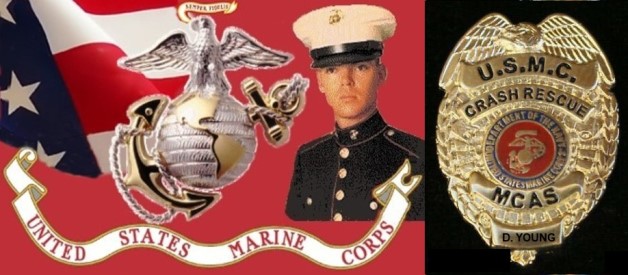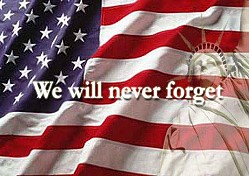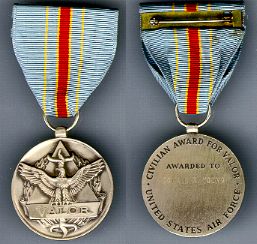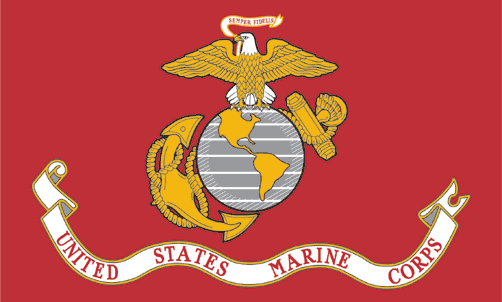My Firefighting Career consists of over 24 years in Crash, Fire & Rescue, Structural, Forest/Brush, Shipboard and Nuclear firefighting. E.M.T. state of Florida & California, Hazmat "FRO" & Technician. Working at both Civilian and Department of Defense (D.O.D) Fire Departments.
Karl Holton, Forestry Camp 6, San Fernando, CA. 1966
Crash Fire & Rescue, MOS-7051- Marine Corps Air Station Yuma, AZ. 1972-75
Naval Training Center FD, Orlando FL 1975-78
Volunteer, Lake Barton FD, Orlando, FL 1975-1977
Founder of the Westover FD, Volunteers, Westover, AL. 1978-79
Vol. for Chelsa FD, Chelsa, AL. 1978-79
Marine Corps Logistic Base FD, Barstow CA 1979-80
George AFB FD, Victorville, CA 1980-92
Vol. for Apple Valley Fire Protection District, Apple Valley, CA 1981-83 - View Maximum Exposure TV Clip of AVFD Brush & Structural Fire
Puget Sound Naval Shipyard FD, Bremerton, WA. 1992
Naval Air Facility FD, El Centro CA 1992-1996, Retired
Fire & Safety Officer, DVMCCF Adelanto, CA 1997-2000, Disabled
Some rewards from my career Meritorious Promotion from LCPL to CPL for saving 2 pilots from crashing, the Civilian Medal of Valor while a DOD Federal Fire Fighter at George AFB and starting a Volunteer Fire Dept. Westover, AL.

|
Meritoriously Promoted Corporal - Diverting 2 Marine Aviators from Crashing 17 Jan 1974 by W.R. Quinn 2 star General |
The Marine Corps Fire & Emergency Services History
The first Marine Corps Structural Fire Department was established at Marine Corps Recruit Depot, Parris Island, SC in 1915 when the Marine Corps acquired the land that had been used as a Navy prison. The department consisted of four stations.
The Marine Corps Recruit Depot at San Diego, CA established the second Marine Corps Fire Department in 1916 followed by Marine Corps Base, Quantico, VA, Fire Department in 1917. The first Marine Corps Fire Department with an aviation section was established at Marine Flying Field, Quantico, VA in 1917. When Marine Corps Base Camp Lejeune, NC was established in 1941, fire trucks were transferred from Marine Corps Recruit Depot, Parris Island to equip the Camp Lejeune Fire Department.
From their initial establishment through World War II, the fire departments were totally staffed by Marines. In 1947, Headquarters Marine Corps created a Military Occupational Specialty (MOS 7051) for an airfield firefighter, the Crash Crewman. This MOS also had a secondary duty of structural firefighter. Several of the Marine firefighters at Parris Island became the first Marine Crash Crewmen. Marine firefighters from other bases were also assigned the new MOS and left the structural fire departments to organize the airfield fire departments. Between 1947 and 1949, the fire departments began integrating civilian fire fighters. During the Korean conflict, the Marines were phased out of the structural fire departments and they were staffed with civilians. Marines received their training at the Navy fire school at Naval Air Station Memphis, TN until establishment of the DOD Joint Fire School at Goodfellow AFB, TX.
Beginning in the early 1950’s, Crash Crew Marines went through several reorganizations in the search to provide the best crash and structural fire protection to Marine aviation squadrons during combat and peacetime deployments. For a time they were assigned to Marine Air Base Squadrons (MABS) which were attached to either a Marine Aircraft Group (MAG), or Marine Wing Support Group (MWSG). Each Air Wing attempted local solutions such as MABS, Wing Engineer Squadron, Wing Equipment Repair Squadron, Wing Motor Transport Squadron, Headquarters & Headquarters Squadron and Marine Wing Support Squadron (MWSS). Headquarters Marine Corps finally selected the MWSS concept, placing them all in MWSG’s in the mid-1980’s.
Today, the Marine Corps continues to maintain two distinct fire and emergency services (F&ES), one for aircraft rescue fire fighting (ARFF) staffed by uniformed Marines, and one for structural fire and emergency services staffed by Civil Service firefighters, our Civilian Marines. The ARFF units provide protection for 10 Marine Corps Air Stations/Air Facilities and two Auxiliary Landing Fields. The Marines also continue to provide deployable fire protection by assignment to 10 Marine Wing Support Squadrons. The Marine fire fighting personnel consists of 535 deployable billets and 410 others, including billets at Air Stations and school instructors.
The Marine Corps structural fire and emergency services consists of 16 fire departments that are staffed by 720 civilian fire fighters and 220 Japanese nationals and provide fire protection to 19 Marine Corps installations and 2 Navy installations. By cross training and providing mutual support, both F&ES departments render fire suppression, fire prevention, emergency medical response, hazardous materials response and rescue services to their respective areas.
Looking for USMC MOS 7051 Stationed at MCAS Yuma

A proud tradition & history I was part of Jun 1972 - Jun 1975, Federal Fire & Civilian Fire Service 1975-1996


